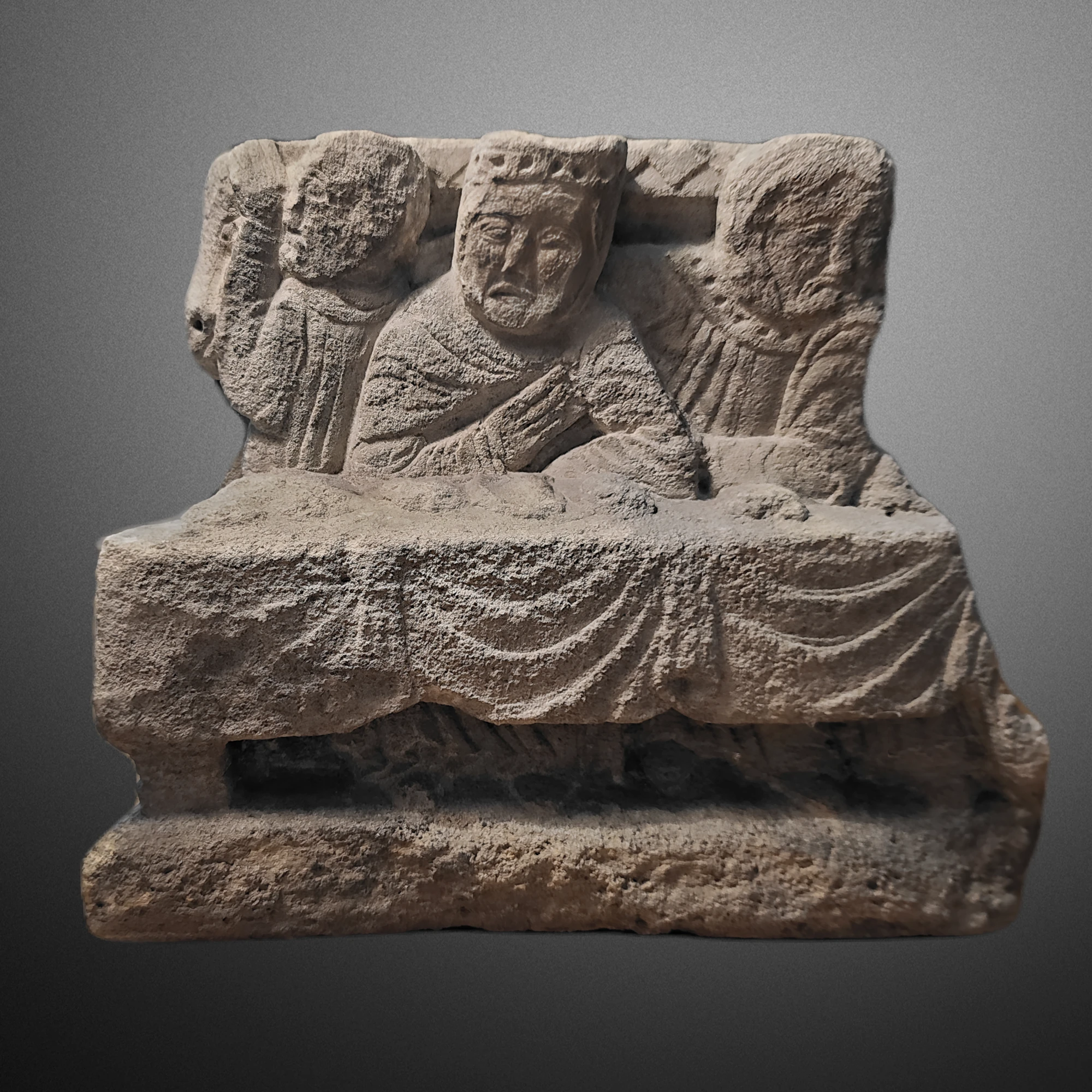Back to the artwork ref.245
Switch to full screen mode
Exit full screen mode

Origin: North of France
Medium: Limestone
Size: H:32cm W:35cm D:37cm
Period: 12th century
Condition: Wear, missing on one side.
Ref.245
Triangular section corner capital with two sculpted and historiated faces. The first scene shows a horseman joining a banquet scene with a lamenting character in the background. The clothes decorated with curved lines are hemmed with trepan work. The second scene, the banquet, shows a king seated at a table, accompanied by two guests, one of whom seems to welcome the horseman. The table is covered with a pleated cloth and supports a plate in front of the king and some bread. This scene seems to correspond to the biblical episode of Mephibosheth at King David's table. The scene with the rider can therefore be the arrival of Tsiba who will betray Mephibosheth, which can explain the attitude of the second guest who turns away, contrite...
According to the Old Testament, Mephibosheth (Merib-baal) is the grandson of King Saul and King David granted him the privilege of eating at his table like his sons. He will be deprived of his goods and privileges during Tsiba's betrayal. A rare representation for the Romanesque period.
The faces, wides, show little relief and a lot of austerity, the moustaches of the characters are strongly marked, which seems to reflect a northern work of the 12th century under Rhine or Meuse influence. North or East of France.
Works consulted: Musée du Louvre French Sculpture Volume I Middle Ages, Françoise Baron, Paris, 1996 - Musée national du Louvre. Reasoned description of the Sculptures of the Middle Ages, the Renaissance and Modern Times, volume 1 Middle Ages, Marcel Auber Michèle Beaulieu, Paris, 1950